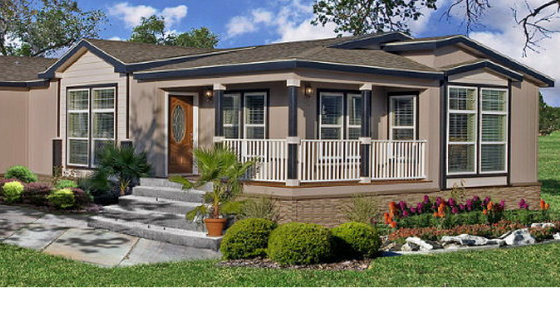5 Reasons Manufactured Home Buyers Choose a Manufactured Home
October 6, 2016

According to recent Census data, the median single-family square floor area declined by 73 square feet from the first to the second quarter of this year. Shrinking household size is influenced by the current economic situation of the vast majority of U.S. households followed by the affordable housing crisis, changes in the family structure and shifts in the attitude toward frugal living.
The collapse of the housing market that initiated the 2007-2008 financial crisis has brought many of us back to reality. After more than four million homeowners lost their homes through foreclosure between 2007 and 2011, more people have come to the conclusion that getting a smaller home and having less financial burden is much better than purchasing a larger home and ending up defaulting on the mortgage. As a result, increasing numbers of home buyers have started to look for more cost-effective housing alternatives, often choosing manufactured homes over traditional site-built construction.
The following points reveal five undeniable facts and reasons why increasing numbers of home buyers decide to purchase a manufactured home.
Manufactured homes are less expensive to build than site-built homes.
For starters, manufactured homes are built in a controlled factory environment, where bad weather, damage, vandalism and theft are non-existent. In addition, a manufactured home:
- takes only a few weeks to build, as opposed to several months required by typical site-built construction;
- is built from panels or modules, which create less waste compared to a house built on location;
- involves less labor because operations are managed more efficiently.
Furthermore, manufactured homes are built in “one-stop shops.” This allows manufacturers to purchase materials in bulk, which lead to significant cost savings that translate into increased affordability for manufactured home buyers.
Similar to site-built dwellings, manufactured homes are constructed to comply with strict building standards.
Regulating the construction and installation of manufactured homes, the HUD Code is a collection of performance standards that addresses a series of aspects, ranging from structural design, construction, transportation and installation to energy efficiency, strength, durability, quality, fire resistance, plumbing, air conditioning, heating and electrical systems. To ensure compliance with the HUD Code, state and third-party agencies review and approve materials, manufacturing and installation procedures.
Ongoing inspections and strict supervision of each step of the manufacturing process have turned manufactured homes into one of the safest dwelling alternatives available today. After Hurricane Andrew hit Florida back in 1992, FEMA noted that manufactured homes had “performed much better than conventional residential framing,” particularly because of their "module-to-module combinations." Not only the HUD Code has been further improved since then; manufacturers have also been making continuous efforts to update their quality control and quality assurance procedures.
Manufactured homes can be customized according to buyers’ needs.
Experts from the University of Nebraska-Lincoln have issued a paper according to which manufactured homes give buyers the ability to customize the property to their specifications. Though manufacturers make available certain ready-made floor plans, architectural styles and standard features, they use specialized design software solutions to offer home buyers more flexibility in customizing the layout, architecture, exterior siding, finishing options and add-ons like porches, decks, carports and fireplaces. When buying a manufactured home, it’s important to pay attention to exactly what is and what isn’t included in the package you select.
Manufactured homes are becoming more energy efficient.
According to the U.S Department of Energy, new manufactured homes can be “designed for energy efficiency,” while existing homes can be retrofitted with “green” features. Manufacturers provide a series of sustainable and energy-efficient materials, such as insulation for walls and foundation, insulated skirting products, cork or bamboo flooring, low-E windows and doors, and “cool” roofs. In addition, manufactured home buyers can choose renewable energy systems like solar panels and EnergyStar appliances.
More favorable financing options are becoming available for manufactured homes.
Recently, new efforts have been made in order to offer consumers more affordable manufactured home financing options from a higher number of sources. Organizations like the FHFA, MHI and CFED are working together to turn manufactured homes into a more "realistic" and achievable housing alternative for potential manufactured home buyers.
If you’re in the market for a manufactured home, Triad Financial Services can help you get the right loan product for your financial situation. With more than 57 years of experience in the manufactured home lending industry, we’re able to offer the perfect combination of flexible manufactured home financing and refinancing options, competitive rates, attractive terms and excellent customer service. To learn more about our loan products and services, please call (800)-522-2013 today, and; one of our loan officers will gladly answer your questions.
